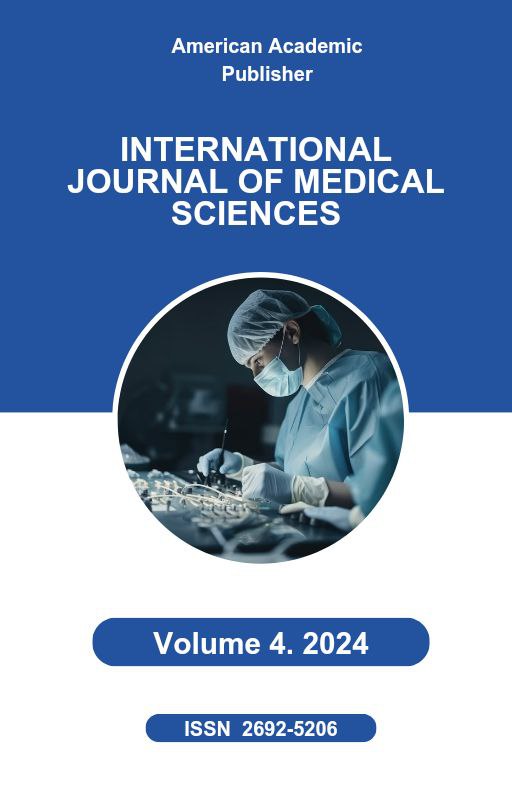 Articles
| Open Access |
https://doi.org/10.55640/
Articles
| Open Access |
https://doi.org/10.55640/
THE IMPORTANCE OF STATE PROGRAMS FOR THE PREVENTION AND EARLY DETECTION OF CHILDHOOD BRONCHIAL ASTHMA IN UZBEKISTAN: A STRATEGIC FRAMEWORK
Zokirov Botirjon Qobiljon ugli , Department of Hospital Pediatrics, Andijan State Medical InstituteAbstract
Introduction: Childhood bronchial asthma represents a significant and growing public health challenge in Uzbekistan, contributing to substantial morbidity and socioeconomic burden. Delays in diagnosis and suboptimal prevention strategies at the primary healthcare level exacerbate the problem. A coordinated, state-level strategic approach is essential for effective long-term control. This article analyzes the strategic importance of national programs for the prevention and early detection of childhood asthma in Uzbekistan. Methods: This study employs a health policy analysis framework. It involves a systematic review of international guidelines from the World Health Organization (WHO) and the Global Initiative for Asthma (GINA), an analysis of successful national asthma programs in other countries, and an examination of Uzbekistan's current healthcare priorities as outlined in the "New Uzbekistan" Development Strategy for 2022-2026. A strategic framework was synthesized based on these data sources to identify key intervention areas for a national program. Results: The analysis identified two core strategic pillars for a comprehensive national program: (1) Primary Prevention and (2) Early Detection and Management. The Primary Prevention pillar encompasses three key domains: strengthening environmental controls to reduce exposure to pollutants and allergens; launching national public health campaigns to improve health literacy regarding asthma risk factors; and promoting healthy nutrition, including breastfeeding. The Early Detection pillar focuses on four critical areas: enhancing the capacity of primary healthcare professionals through continuous medical education; expanding access to objective diagnostic tools like spirometry in primary care settings; implementing a national screening program for high-risk children; and integrating digital health technologies and clinical decision support systems to standardize care. Conclusion: A comprehensive, government-led national program is critical to fundamentally improving childhood asthma outcomes in Uzbekistan. Such a program, built on the pillars of robust primary prevention and systematic early detection, has the potential to reduce the incidence and severity of the disease, decrease long-term healthcare costs, and improve the quality of life for millions of children. Successful implementation will require strong political commitment, multi-sectoral collaboration, and sustained financial investment.
Keywords
bronchial asthma, children, state program, healthcare policy, prevention, early diagnosis, Uzbekistan, primary healthcare.
References
Asher, M. I., Montefort, S., Björkstén, B., Lai, C. K., Strachan, D. P., Weiland, S. K., & Williams, H. (2006). Worldwide time trends in the prevalence of symptoms of asthma, allergic rhinoconjunctivitis, and eczema in childhood: ISAAC Phases One and Three repeat multicountry cross-sectional surveys. The Lancet, 368(9537), 733-743. https://doi.org/10.1016/S0140-6736(06)69283-0
Decree of the President of the Republic of Uzbekistan. (2022, January 28). On the Development Strategy of the New Uzbekistan for 2022-2026 (No. PF-60). National Database of Legislation of the Republic of Uzbekistan.
Global Asthma Network. (2020). The Global Asthma Report 2020. Auckland, New Zealand.
Global Initiative for Asthma. (2023). Global Strategy for Asthma Management and Prevention. GINA Reports. Retrieved from https://ginasthma.org/
Martinez, F. D. (2019). The origins of asthma and allergic diseases. The Journal of Allergy and Clinical Immunology: In Practice, 7(3), 799-805. https://www.google.com/search?q=https://doi.org/10.1016/j.jaip.2019.01.039
Ministry of Health of the Republic of Uzbekistan. (2021). National Clinical Protocols for the Diagnosis and Treatment of Diseases in Children. Tashkent: "Ibn Sino".
Nurmatov, U. B., van Schayck, C. P., Hurwitz, B., & Sheikh, A. (2012). House dust mite avoidance measures for perennial allergic rhinitis: an updated Cochrane systematic review. Allergy, 67(2), 158-165. https://www.google.com/search?q=https://doi.org/10.1111/j.1398-9995.2011.02755.x
Papadopoulos, N. G., Arakawa, H., Carlsen, K. H., Custovic, A., Gern, J., Lemanske, R., ... & Wahn, U. (2020). International consensus on (ICON) pediatric asthma. Allergy, 75(8), 1913-1931. https://doi.org/10.1111/all.14251
World Health Organization. (2021). Noncommunicable diseases: Childhood asthma. WHO Fact Sheets. Retrieved from https://www.who.int/news-room/fact-sheets/detail/asthma
Yusupalieva, D., & Zuparova, M. (2018). The prevalence and risk factors of bronchial asthma among children in the Fergana Valley. Journal of Theoretical and Clinical Medicine, (4), 56-60.
Article Statistics
Downloads
Copyright License

This work is licensed under a Creative Commons Attribution 4.0 International License.

